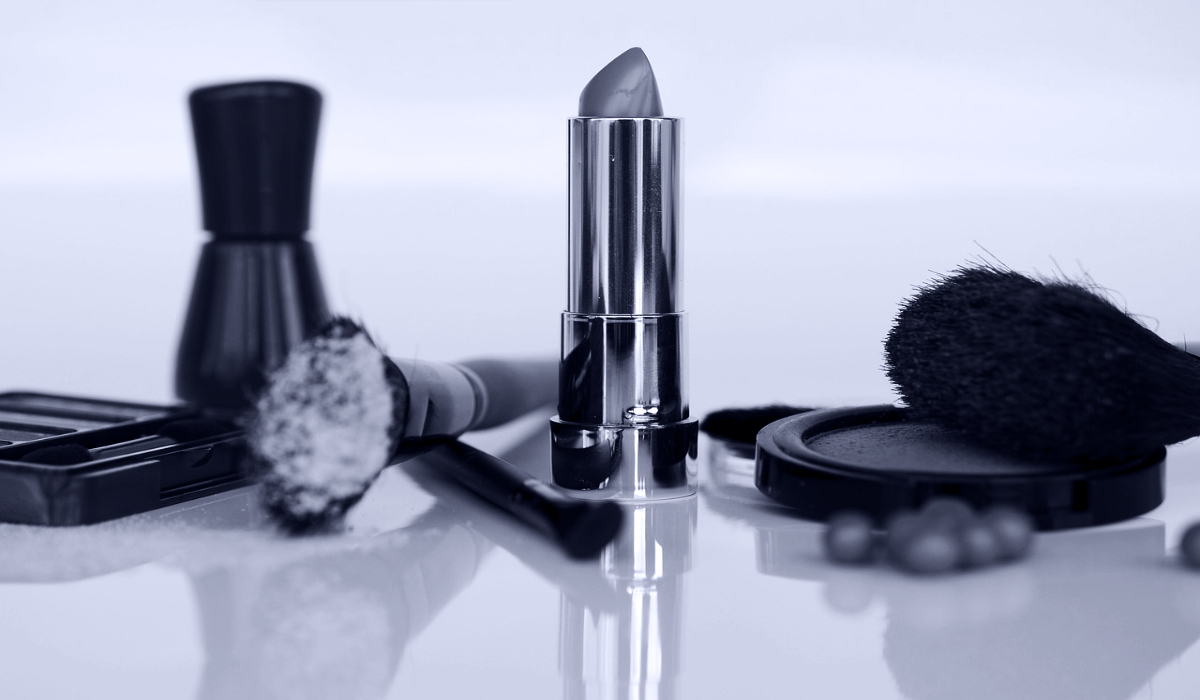Currently, the focus is on the numerous substance restrictions for microplastics introduced by Commission Regulation (EU) 2023/2055 of 25 September 2023 amending Annex XVII of Regulation (EC) No 1907/2006 of the European Parliament and of the Council concerning the Registration, Evaluation, Authorisation and Restriction of Chemicals (REACH) as regards synthetic polymer microparticles, which has received much media attention. Although the amendments relate to Regulation (EC) No. 1907/2006 (REACH), they will also apply to cosmetic products – in some cases as early as 17.10.2023 (we will publish a separate blog post on this very soon). This is due to the fact that substance restrictions for cosmetic products, which are based on Regulation (EC) 1223/2009 (CPR), are exclusively aimed at protecting human health. Therefore, substances in cosmetic products that at the same time lead to environmental hazards can and must also be restricted. Such restrictions are therefore carried out via the instruments of the REACH Regulation. Thus, both legal regimes must always be kept in view with regard to applicable substance restrictions.
In addition to the above-mentioned substance restrictions under the REACH Regulation, however, those affected should also keep an eye on further developments in cosmetics law. This article therefore presents the latest amendments to the Cosmetic Products Regulation by Regulation (EU) 2023/1490 with regard to CMR substances (see I.) and by Regulation (EU) 2023/1545 with regard to allergenic fragrances (see III.).
I. Regulation (EU) 2023/1490 – Introduction of new CMR substances
Regulation (EU) 2023/1490 serves to maintain legal certainty by adopting classification decisions under the CLP Regulation in cosmetics law.
1. Classification of the Regulation within the European regulatory architecture for hazardous substances
Regulation (EC) No. 1272/2008 (CLP) establishes uniform requirements for the classification, labeling and packaging of chemical substances and mixtures according to the United Nations Globally Harmonized System (GHS). According to its recital (1), the CLP Regulation aims to ensure a high level of protection for human health and the environment and to ensure the free movement of chemical substances, mixtures and certain specific articles, while enhancing competitiveness and innovation.
To this end, the CLP Regulation provides in Part 3 of its Annex VI for a harmonized classification of substances as carcinogenic, mutagenic and/or toxic for reproduction (CMR) based on a scientific evaluation by the Risk Assessment Committee (RAC) of the European Chemicals Agency (ECHA). Substances are classified as CMR category 1A (known CMR), category 1B (presumded CMR) or category 2 (suspected CMR) according to the level of evidence of their CMR properties.
It is true that cosmetic products within the meaning of the Cosmetic Regulation are expressly excluded from the scope of application of the CLP Regulation pursuant to Art. 1 para. 5 lit. c) CLP . However, Art. 15 paras. 1 and 2 CPR refer to the CLP Regulation. According to this provision, the use in cosmetic products of substances classified as CMR substances of category 2 and categories 1A or 1B according to Part 3 of Annex VI of the CLP Regulation is generally prohibited.
Within the framework of the CLP Regulation, the European Commission regularly classifies new CMR substances, which are transferred to Annex II CPR by means of regulations, in order to establish regulatory consistency with regard to the listing of CMR substances in the sense of greater legal certainty.
2. Basis and content of the Regulation (EU) 2023/1490
Regulation (EU) 2023/1490, also known as the “CMR Omnibus Regulation”, amends the Cosmetic Product Regulation following classification decisions under the CLP Regulation by including new CMR substances whose use will be prohibited in cosmetic products. The amendments to the Cosmetic Products Regulation introduced by Regulation (EU) 2023/1490 will apply from 01.12.2023.
This amendment to the Cosmetic Regulation is due to Delegated Regulation (EU) 2022/692 of 16.02.2022 amending the CLP Regulation for the purpose of adaptation to technical and scientific progress, which was published in the Official Journal of the EU on 03.05.2023. The Delegated Regulation adds a total of 39 new harmonized CMR substances to the list contained in Annex VI CLP, changes the classification of 17 CMR substances already included in Annex VI and deletes one CMR substance included in the list.
According to recital (7) of Regulation (EU) 2023/1490, none of these newly classified CMR substances was previously included in the list of substances banned in cosmetic products according to Annex II of the Cosmetic Regulation. Only the substance 2-ethylhexanoic acid (CAS No. 149-57-5) is listed in Annex II, but the salts of this substance, which have now also been classified as a CMR substance of category 1B by Delegated Regulation (EU) 2022/692, are not included in this entry. Therefore, in order to implement the prohibition on CMR substances uniformly in the internal market, to provide legal certainty and to ensure a high level of protection for human health, these amendments should be transferred to Annex II of the Cosmetic Regulation by Regulation (EU) 2023/1490. Regulation (EU) 2023/1490 consequently amends the Cosmetic Products Regulation to include a total of 30 of the 39 newly classified CMR substances, and the salts of the substance 2-ethylhexanoic acid (in the already existing entry 1024), in Annex II of the Cosmetic Regulation.
Probably the most relevant new entries in practice concern the ingredients benzophenone (CAS No. 119-61-9) and pentasodium pentetate (CAS No. 140-01-2). Benzophenone in particular is regularly found in cremes, shampoos, perfumes and in soaps. The manufacturers of the cosmetic products concerned will therefore each have to use a modified formulation from 01.12.2023 at the latest.
II. Regulation (EU) 2023/1545 – Extended labeling requirements for allergenic fragrances
Regulation (EU) 2023/1545 amending the Cosmetic Products Regulation with regard to the labeling of allergenic fragrances in cosmetic products was adopted on 26.07.2023 and generally applies since 15.08.2023.
1. Regulatory objective of the Regulation
According to its recital (3), the objective of the Regulation is to protect the entire population from the development of fragrance allergies (primary prevention) and persons who are already sensitized to an allergen from the occurrence of allergy symptoms (secondary prevention).
To achieve the objective, recital (4) of the Regulation provides the following: For primary prevention, the European Commission considers a restriction of allergenic fragrances to be sufficient under certain circumstances. However, sensitized individuals may experience symptoms when exposed to allergens at concentrations below the maximum permitted levels. Therefore, according to the European Commission, it is important in the context of secondary prevention to provide information on the presence of individual allergenic fragrances in cosmetic products so that sensitized individuals can avoid contact with the substance to which they are allergic.
2. Background and content of the Regulation
The Cosmetic Products Regulation already provides for corresponding information requirements in its Art. 19 para. 1 lit. g). According to this, a cosmetic product may only be made available on the market if a list of ingredients appears on its packaging. The provision also clarifies that fragrance and aroma substances and their source materials must also be indicated as ingredients using the terms “perfume” or “aroma”. In addition to the terms “perfume” or “aroma”, the presence of substances that must be listed on the packaging according to the “Other” column in Annex III Cosmetic Regulation must also be indicated. Currently, 24 allergenic fragrances listed in entries 45 and 67 to 92 of Annex III CPR must be indicated in the list of ingredients.
Already in June 2012, the Scientific Committee on Consumer Safety (SCCS) confirmed at the request of the Commission that the allergenic fragrances listed in the aforementioned entries of Annex III of the Cosmetic Regulation are still relevant. In addition, 56 other allergenic fragrances have been identified which have clearly caused allergies in humans and which currently do not have to be individually labeled under the Cosmetic Regulation (see recital [6] of the Regulation).
The European Commission is now taking the opinion of the Scientific Committee on Consumer Safety (SCCS) as an opportunity to expand Annex III of the Cosmetic Regulation to include these 56 allergenic fragrances in accordance with scientific findings. As a result, Regulation (EU) 2023/1545 has now added to Annex III CPR an obligation to label these allergenic fragrances individually if they are present in concentrations greater than 0.001% in products that remain on the skin/hair and greater than 0.01% in products that are to be rinsed/rinsed off.
In the course of updating this list, existing entries on allergenic fragrances have also been conceptually and structurally revised for reasons of coherence and clarity. Thus, according to recital (8) of Regulation (EU) 2023/1545, common names of substances were aligned with the latest version of the glossary based on Art. 33 CPR (Commission Implementing Decision (EU) 2022/677 of 31 March 2022 laying down rules for the application of Regulation (EC) No 1223/2009 of the European Parliament and of the Council as regards the glossary of common ingredient names for use in the labelling of cosmetic products) and similar substances were grouped together in joint entries.
3. Transitional Periods
The update of the list of allergenic fragrances leads to entries in Annex III CPR being created by a combination of existing and new restrictions. For this reason, Regulation (EU) 2023/1545 provides transition periods for economic operators to have sufficient time to comply with the new restrictions and to implement them in the labeling, in addition to the application of the already existing restrictions.
In this regard, the transition periods are structured as follows, according to footnote “(*)” to the Annex of Regulation (EU) 2023/1545:
- Cosmetic products containing the substances concerned and for which the restriction(s) is/are not complied with may be placed on the Union market until 31.07.2026 and made available on the Union market until 31.07.2028.
- This gives economic operators a reasonable period of two years from 31.07.2026 to withdraw from the market cosmetic products that do not comply with the new requirements, but which were placed on the market before the new labeling rules came into force if they are not sold off during this period.
III. Outlook – Consequences for the economic operators
Due to the current amendments to both the Cosmetic Products Regulation itself and the REACH Regulation, all manufacturers and importers in particular, in their role as responsible persons for cosmetic products, will have to check whether their products can continue to be placed on the market without adaptation from the respective dates of application of the new requirements. Otherwise, the reformulation and the possibly necessary adaptation of the labeling should be planned with sufficient lead time according to the respective transition periods. This applies all the more to private label manufacturers, who may need even more time for coordination with their respective contract manufacturers.
Do you have any questions about this news, or would you like to discuss it with the author? Please contact: Dr. Zeynep Schreitmüller and Michael Öttinger






